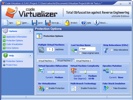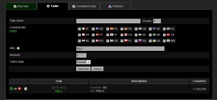Indian authorities have recovered $1,200 and several credit cards from a backpack carried by one of the terrorists who assailed ten targets in Mumbai, killing at least 172 people and injuring hundreds of others, according to press
reports. The presence of the cards might signal that credit card fraud helped fund the terror attacks, Dennis Lormel, an anti-money laundering consultant who once led the Federal Bureau of Investigation’s anti-terrorist financing unit, told Complinet.
The credit cards in question reportedly were issued by Citibank, HSBC, ICICI Bank, Axis Bank, HDFC Bank and
State Bank of Mauritius. “I’m interested in the potential credit card fraud as a funding source and operational support mechanism,” Lormel said. For Lormel, the possible link between credit card fraud and the Mumbai terrorist attacks is more than a fleeting interest. He has long feared that terrorists are becoming increasingly adept at generating funds through such illicit schemes; he recently wrote a white paper in which he dubbed credit card fraud a “growth industry” for terrorists. “There is no empirical statistical data establishing the nexus between credit card exploitation and terrorism, but there are ample anecdotal case studies demonstrating how extensively terrorists rely on credit card information in furtherance of their heinous activities,” Lormel wrote in his paper.
Alternative funding sources
Lormel added that a previous Complinet article examining how the Mumbai attacks might have been funded
“presents interesting and viable possible funding sources.”
“It’s highly likely hawalas were used. Wealthy individual donors and charities could be funding sources, as pointed out. It will be interesting to determine if drugs and other criminal activities contributed. Likewise, the nexus between Dawood Ibrahim and the attack should be one of the highest investigative priorities,” he said.
“The attack itself will play out to be inexpensive. The overall operation will be much costlier when you factor in the
training and subsistence of the attackers and their logistical support element.”
Still, Lormel conceded that it may be some time before authorities can say with any degree of certainty how the
murderous rampage was funded. “It’s too early to understand the scope of the funding for the attacks,” he said.




